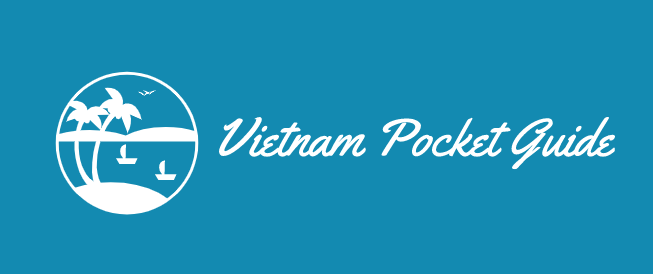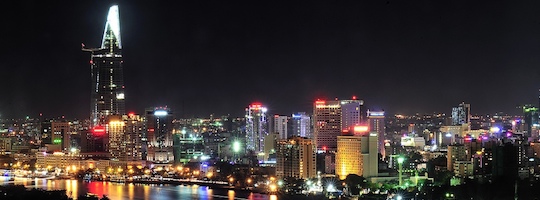First Impressions: What’s It Like To Live In Ho Chi Minh City, Vietnam?

What’s It Like To Live In Ho Chi Minh City, Vietnam? In late 2013, having quit my job after two years of saving up and getting my financials in order, I took a month off in Bali, hopped over to Chiang Mai, and wrapped it up by attending the annual Dynamite Circle meet up in Bangkok.
Coming off the high of a large conference with over 200 people, something was missing once I got back to Taiwan.
The energy of being around like-minded folks where we talked about business, random topics, and the latest books just wasn’t there.
It felt like an old rut.
After all, I had already thrown away the old life script and if you are the average of the five people you surround yourself with – it was time to find a new community of people doing the same thing.
The last thing I wanted was to build a location independent business…and stay in the same location.
No thanks!
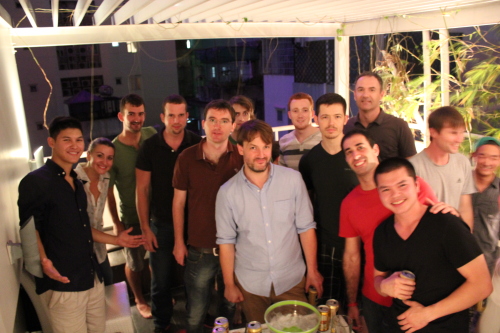
Since 2012, tribes of of Internet entrepreneurs have been gathering around in Saigon (Vietnam), Chiang Mai (Thailand), and Medellin (Colombia) where people are on the ground bootstrapping their businesses from cafes and co-working spaces.
As my friend Jon Myers says, you need to place yourself in favorable situations for good things to happen and engineer your own serendipity. Good things do not come to those who wait, except what’s leftover by those who hustle.
With a number of friends already based here in Ho Chi Minh City (a.k.a. Saigon), getting a one-way ticket to Vietnam was a no-brainer.
This post is a complete breakdown of everything in case you are thinking about relocating here too.
Overview: Living In Ho Chi Minh City
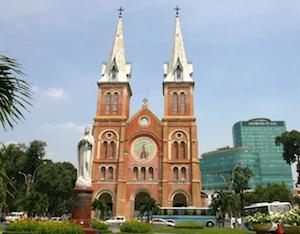 Ho Chi Minh city is the largest metropolitan city in Vietnam.
Ho Chi Minh city is the largest metropolitan city in Vietnam.
Under the name Saigon, it was originally a French colony until it was renamed in 1976 after the reunification.
During the 1970-1990s, economists coined the phrase “Four Asian Tigers” after Hong Kong, Korea, Taiwan, and Singapore as the fastest growing economies.
By the 21st century, all four countries joined the ranks of high-income advanced economies.
In recent years, Indonesia, Malaysia, Thailand, and the Philippines were coined as the “Tiger Cub Economies” since they’re on a similar growth trajectory as the original Asian Tigers.
But since this is my blog and I have an economics degree, I’ll go ahead and throw Vietnam in there too even though it’s considered a frontier market.
 In 2013, Vietnam had a GDP of $181 billion USD.
In 2013, Vietnam had a GDP of $181 billion USD.
There’s still a lot of room for growth and to give you some perspective – mutual fund companies like Fidelity, Blackrock, and Vanguard have combined investment assets north of $5 trillion USD. That’s about 27 times the GDP of Vietnam last year.
Half of the country’s population is under 30 and the local vibe is bustling with energy as the economy continues to grow.
With the prevalence of technology and information freely available now, I believe what took the Asian tigers 20-30 years to achieve will take the Tiger Cubs only 10-15 years. So what’s it like on the ground?
Pros
 1. Chores disappear
1. Chores disappear
One of the greatest things here is not having to clean the house or do the chores I once hated as a child.
For $70 USD a month split between four roommates, we have a maid that comes in twice a week to clean the entire house, help out with laundry, and make the place completely spotless.
I then proceed to destroy it in the next few days with my experimental cooking since reading the 4-Hour Chef.
Serviced apartments take it even further by cleaning six times a week, ironing your clothes, and delivering groceries for you. It sounds frivolous at first, but freeing mental head-space off medial tasks can add a lot of productivity over time.
It’s like magic.
 2. Café Culture
2. Café Culture
Coffee production has been a major source of income for Vietnam since the early 20th century. In 2009, coffee was second to rice in value of agricultural exports.
Because of that, there are a great number of established cafes around the city where you can work, chill out, read, or get some afternoon tea. Fellow Saigon resident James Clark from Nomadic Notes has a great list of cafes to check out here.
On a typical day, 5-8 people get together to co-work from the cafes here in Saigon. ID Café, M2C, Cosmos Cafe, and L’uisine are the most popular ones at the moment.
There are two main co-working spaces here in Saigon that I know of – Saigon Hub .vn and Work Saigon.
While the facilities are decent and there is a good community, I’ve just been more productive working out of cafes as it also allows me to explore the city. A few folks here that have local developers usually have them work out of Saigon Hub.
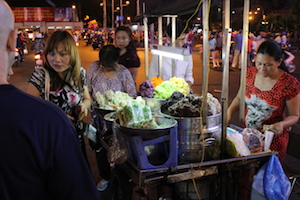 3. Cost Of Living
3. Cost Of Living
Compared to Western cities like London, New York, and Los Angeles, living in Vietnam is cheaper by a large extent.
Broadly speaking, an average meal from a local restaurant will cost you about $1.50 to $3.00 USD, with upwards of $10 US+ at nicer establishments in the city.
In the city center around District 1 and 3, a small room in a home-stay or apartment will cost anywhere from $250-$300, with high-end full service apartments starting at $800 USD. A typical studio with a kitchen will cost about $450-$600 depending on where you are.
A beer at a local joint will cost about $2-3. At a nicer nightclub or hotel, that same beer would cost you about $4-5 USD.
Prices on menus do not include VAT and service charge; so expect to pay an extra 15% at nicer establishments within the city.
Here are some commodities I purchase on a frequent basis to give you a better idea:
- Bottle of Water (1.5 Liter): $0.50 USD
- Bananas (8-10): $0.90 USD
- Pineapple: $1.25 USD
- 3G Service (3.5GB Data Limit): $9.50 USD
- Chicken Breast (4): $1.80 USD
- Pork (4): $1.80 USD
- Shrimp (12-15): $2.50 USD
- Onions (5): $0.90 USD
- Tomatoes (4-5): $0.50 USD
- Strawberries (20-25): $1.50 USD
In a normal day, I try to eat at home once or twice as the local restaurants use a lot of MSG (monosodium glutamate) in the food as flavoring. Last month, I spent about $130 USD in groceries.
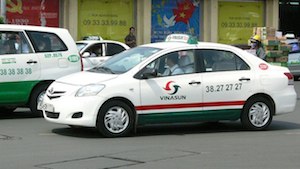 4. Walk-ability
4. Walk-ability
Most of the people I know are based in District 1, which is the city center of Saigon. Headquarters of international corporations and high end retail shops are all based here.
For transportation, you’d be insane to drive a car here as the traffic, motorbikes, and smaller roads will make it a nightmare.
Everything is walkable if you don’t mind the sun and heat. If not, a short taxi ride will cost you anywhere from $2 USD within the city center, to $3-5 USD for rides across the entire city.
For those that hate walking, you can rent a motorbike for about $50-70 USD a month. It’s really the most convenient way to get around the city, although it has its risks due to traffic. Accidents happen on a daily basis here, so be careful if you decide to take one up.
 5. Food
5. Food
Dishes in Vietnam vary by geographical region (north, central, south), and many of the same dishes have variations depending on where you go in the country.
Pho is obviously a big staple here, but there are plenty of other dishes inspired from rice to baguettes.
If you happen to be in town for the next few months, former lawyer turned soup-eater Jodi Ettenberg is hosting food walks to showcase some of the best Vietnamese dishes around town.
Meals on the budget side will cost around $1.50-$2.00 USD, with the higher end that starts at around $5-6 USD or more. You could go super local with street vendors for under $1.00 USD in small pockets of the city, but you’ll need to order in Vietnamese and know exactly what you want.
Here are photos from one I attended in January where I had to eat four dishes and a dessert within five hours:
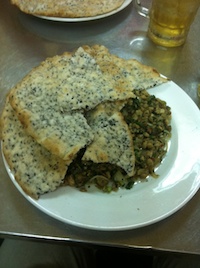 |
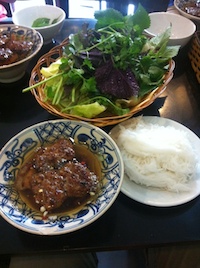 |
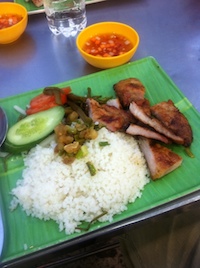 |
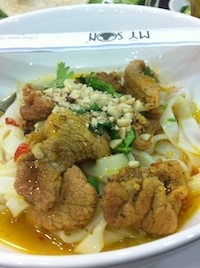 |
Vietnam also has an abundant system of motorbike couriers that will deliver propane tanks, flowers, and virtually anything you can think of.
For a dollar, you can order food online delivered to your house from over 20-30 restaurants around the city. Most folks here use Vietnammm.com to order. Ben Style is a popular choice as the founder was a former bodybuilder that understands the need of eating clean food.
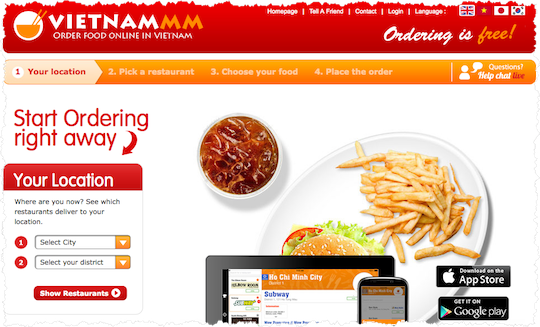
Cons
1. Pollution and Traffic
Like many Southeast Asian countries, motorbike culture is a big part of life so traffic becomes an issue. Crossing the road becomes a game of human Frogger as seen below.

2. Black Puddles Of Death
On the sidewalks, you’ll have to watch out for the black puddles of water that come from a wheel of fortune – dishwashing leftovers, rain, or who-kn0ws-what. Avoid these puddles of water like the plague and you’ll be fine.
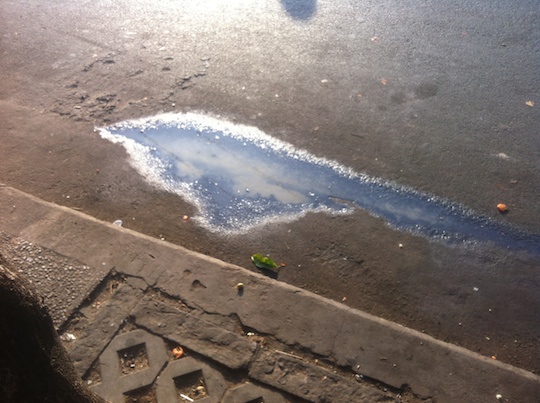
3. Heat and Humidity
If you hate sweating while walking around on a hot summer day, you probably won’t like Southeast Asia very much.
Unlike Southern California, the humidity levels are much higher which makes the afternoons a 24/7 sauna. At night it cools down, but you’ll still need to sleep with an air conditioner on in most cases.
 Because of the humidity, small cuts and bruises take longer to heal and are more prone to infection due to the pollution.
Because of the humidity, small cuts and bruises take longer to heal and are more prone to infection due to the pollution.
Make sure to bring first aid supplies with you just in case. Here is a good list of what to bring if it’s your first time out here.
In addition, a bottle of water becomes your best friend as many of the cafes that sell coffee and juices have plenty of sugar in the beverages.
The beaches are also not as accessible compared to Bali, and you’ll have to take a short flight away to escape the city and find the waters.
4. MSG
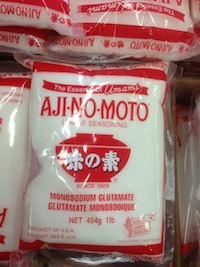 Monosodium glutamate is a flavor enhancing food additive that’s used in Asian dishes and commercially packaged foods such as chips, crackers, soups, canned foods, and salad dressings.
Monosodium glutamate is a flavor enhancing food additive that’s used in Asian dishes and commercially packaged foods such as chips, crackers, soups, canned foods, and salad dressings.
In Asian cuisines it’s used as a seasoning in stir-frys and other preparations. There’s an ongoing debate on what levels of MSG are acceptable to be safe, but personally I try to avoid it.
Most dishes at local restaurants will have some amount of MSG here and there, which is why I try to have 1 or 2 meals at home every day.
5. Petty Theft
I’ve heard stories of exquisite poker scams to get money out of unsuspecting tourists and drive-by motorbike thefts in tourist areas, but have never seen one for myself since I’ve been here.
Vietnam is still a developing countries and like many places, there is a large income gap between the tourists and locals who may be struggling to get by. It’s unfortunate that it happens but as long as you are careful with your valuables, it shouldn’t be a big deal.
As a general rule, I wouldn’t leave my laptop or phone out in the open at a local café. Also when taking photos with your smartphone, keep your guard up and use the death grip.
Monthly Expenses
Your mileage will vary depending on your quality of life and recreational habits, but generally speaking you can get by pretty comfortably with $1,200 a month. For a higher end budget, $2,500 USD a month will allow you to live like a king with maid services six times a week and have everything delivered to you.
I’ve spent an average of $1,100 USD per month when everything is tallied up.
- Rent: $350
- Utilities: $40
- Taxis: $10
- Groceries: $130
- Eating Out/Drinks/Alcohol: $450
- iPhone 3G: $10
- Misc: $50
- 3-Month Visa: $45
- Gym: $15
I currently live in a house with three roommates in a six-story building. We all have our own bathrooms and I have a disco light in my room. It was originally going to be a karaoke room, but the owners converted it to a regular room to rent out.
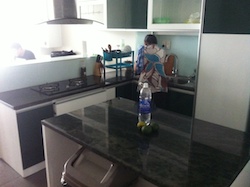 |
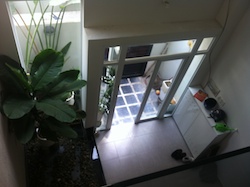 |
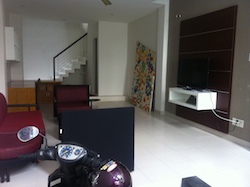 |
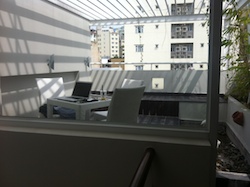 |
In the city center around District 1, a small room in a home-stay or apartment will cost anywhere from $250-$300, with high-end full service apartments starting at $800 USD. A typical studio with a kitchen will cost about $450-$600.
If you live outside the city it becomes significantly cheaper, but you’ll be disconnected from the community and end up spending more time getting around.
Recreational travel is not included in the breakdown as that’s up for you to budget for. Overall it’s just a fraction compared any major US city, so for any bootstrapped entrepreneur it’s a reasonable place to make your home base.
Should You Come To Saigon?
That depends on your profile. It’s hard to give a one-size fits all situation, but here are my general observations:
Bootstrapped Entrepreneurs
Yes. With the community on the ground, having like-minded people to hang out with is hard to beat. There are other hubs around the world at the moment in Medellin (Colombia), Chiang Mai (Thailand), Bangkok (Thailand), and Ubud (Bali) – but the critical mass is really at Saigon where we’ve got 30-50 people on the ground.
Developer / Designers / Programmers
Yes. Kids in Vietnam now learn basic computer programming in second grade, with 11th graders knowing enough to pass the Google interview process. Plenty of folks here have hired developers here for projects that involve PHP, Rails, Objective C, or Magento. Jessie Lawler from Evil Genius Technologies has an apartment rented out as an office for 10-12 team members that code for him.
E-Commerce
Maybe. If you’re into sourcing products, Vietnam does have a small edge against China with lower labor costs and more advanced factories in bags, luggage, and clothing niches. If you’re looking to source over $50,000 USD in product, check out these guys from Sourcing In Vietnam to help you get started.
Hippie-Dippie Folks
No.
Backpackers
No.
Entrepreneur Couples With Kids
No. I don’t have any kids, but having seen what’s available in some areas within Southeast Asia, there are probably better locations to base your kids at the moment. The traffic situation can get a bit hectic, and medical facilities aren’t as developed as Bangkok if an emergency ever arises.
If sales, marketing, and growing the business is your main focus – then yes you should be here as we have plenty of folks in the same online space.
Planning On Visiting?
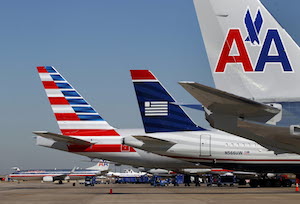 I’ll be here until October 2014 and figure out where to go next after DCBKK 2014.
I’ll be here until October 2014 and figure out where to go next after DCBKK 2014.
Medellin looks exciting at the moment but we’ll see what happens since most of us tend to have location ADD.
If you’re planning on checking out Saigon at some point this year, American Airlines has a great deal from Dallas to Saigon for $1,050 USD including taxes.
Valid for travel from April – May 20th or August 21st – November 30th for Monday through Thursday departures. Must purchase at least 3 days in advance of departure. American’s Hong Kong service starts in June. So if you travel in April or May, it will be via Tokyo and connecting to JAL service to Ho Chi Minh City.
When you get here, taxis should cost around 150,000 VND ($7-8 USD) from the airport to the city center in District 1. Just make sure to take a Vinasun taxi that’s based out on the domestic terminal and make sure they use the meter so you won’t get ripped off.
Hope to see you here one day and if you’re planning on hitting the road, pick up a Baller Leather travel wallet over at ballerleather .com. Cheers!
You can also check the other guides here!
